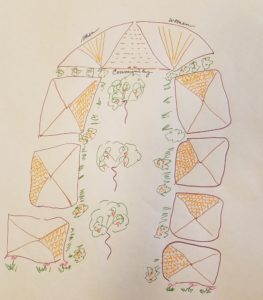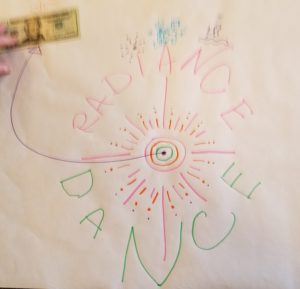by Hanafi Fraval, Chair, Subud Calfornia
NOTE: The following working document was discussed at the Subud California Council Meeting on November 12, 2022 and further shared through conversations during visits being made by Hanafi and Levana to all our Centers. It is available here to give all members an opportunity to be aware of these concerns and of the conversations being held across the Region.
Subud California is facing a number of challenges at present that will likely increase in the next few years. Our membership is aging and contracting. Younger members are few and far between and are very fully engaged in their lives and families, with little time to spare.
Three of our eight centers have accumulated significant debts. It will be very difficult to repay these debts and to continue to maintain these properties at the required level. Five of our groups could be said to be sustainable: Arcata, Sacramento, Los Angeles, Palo Alto and San Diego.
Typically, the profile of a sustainable group is one that has a healthy level of donations from members plus income from events, and/or long-term rental income. When talking to applicants and new members, helpers may not note that the latihan is free, but our premises are not. One of our region’s groups calculated that its current donation levels should be around $100 per month, per member; or $150 per month, per couple. The pattern around the region is that active and regular donors are merely 1/3 of the membership
Our actual member size is small. When our property insurance required Covid waivers in 2020/21, Amelia Williams created a pool of 524 members identified as active or semi-active by the most recent SUSA census count. This pool was reduced by 50 members with no email address or no longer in California. The final number of members who did reply and sign the Docusign form was 337. So, as of 1/27/21, we could confirm 337 people who considered themselves CA Subud members in some form.
It has proven difficult to find people to market and manage events in our centers. The centers that handle ongoing “one time” events pay their event managers 10 to 15% of the event revenue. In groups where there are no members with sufficient time to take up this role, hiring rental and event managers from outside of Subud is a solution.
In those groups where long-term rentals have been established, significant improvements typically have been required to make the space attractive to a commercial renter.
Responsibility of the groups
Subud California’s bylaws make a number of references to what the region must provide to the groups. But there is nothing about the responsibility of the groups to the region. In a family, the first instinct is that we help each other. We are also honest and without agenda when a family member is not quite in line, or is behaving incorrectly.
In California’s case, some of our groups are struggling, perhaps because of aging or diminishing membership, old properties, or other issues. This is where the region can attempt to help; for example, by providing the assistance of the Property Management Committee (PMC). But, whereas the PMC can help with their professional eyes, the groups can help by mobilizing all of their resources to correct situations such as poor maintenance, lagging rentals, and other issues.
We need wording in the bylaws that points out to a group, its committee, and its members that they are responsible for their Subud house. Only under extreme circumstances does the Regional Committee step in to take over management of a group (for example, where membership falls to below ten members, or where there is no committee).
The Regional Building Fund
The building fund is not for maintenance. Its primary use is to fund new capital elements of a center, or new centers, that will directly increase revenue, such as the provision of additional space that can be rented on a long-term basis. Capital improvements, alterations or additions to a property can significantly improve its income capacity, typically from long-term rentals. The return on the improvement should show a convincing case for any investment. The Muhammad Subuh Foundation (MSF) has the same policy.
When we use the building fund for other things, such as maintenance of a Subud house, we must first realize that money withdrawn for these other things is also withdrawn from the region. So, it is the rest of the region that pays. A further principle is that it is of paramount importance that each of us stands on his or her own feet, and does not expect others to carry the load.
Subject to Board (Regional Council) examination, analysis, and approval of any resulting actions and resolutions.



